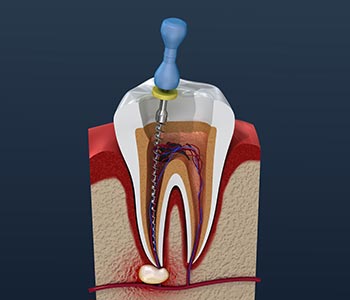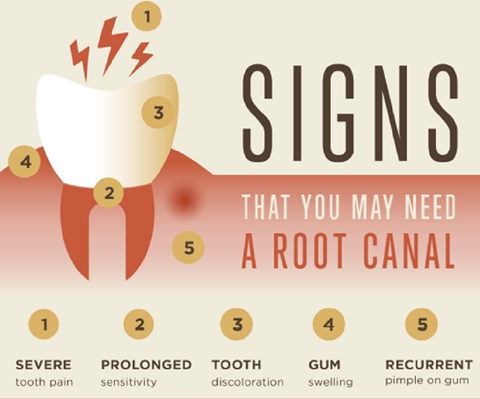
An unfinished root canal treatment means your tooth is still infected with bacteria and there is no means for your tooth to heal unless the treatment is completed. It is recommended that you protect the tooth with a crown afterwards (protects tooth from fracturing and less prone to recurrent decay than a massive filling). In Pulpectomy, all the pulp in the pulp chamber and root canal of a tooth is removed.

A Pulpectomy is performed to relieve the patient from pain until you can get a root canal done. You should visit your dentist to have it checked. The tooth will most likely cause you pain.
The fracture may cause swelling in the gum which would definitely point to a failed root canal. After your root canal procedure, it is normal to have pain after root canal in the form of tooth tenderness. Your tooth is repaired and now has to recover.
You may experience pain and tenderness of the tooth, the tooth and surrounding gums, or the entire jaw on that side. The most common complication is that the tooth will begin to cause pain. There is also a risk that the tooth may fracture or cause a potentially dangerous swelling of the gum. Despite these problems, in many cases,.
No: Any tooth structure removed during root canal therapy will not regrow. However, only a small amount of tooth structure is removed through the center of the roots. So is the pulp which is also in the canal area. The root as a whole is still functional after it is filled.
Unfinished root canal treatment leaves an open space which is an ideal breeding spot for bacterial infection of the canal. Re-infection of the canals can occur and cause major symptoms and even reach a stage when it becomes non curable and requires extraction. It does not just numb the gums, and the inflamed tissues. It ensures proper treatment of the root canal , killing the pain and leaving no room for occurrence of pain again. As dumb as it may soun it really works.
If the fracture has gone down below the line of the gingival margin then extraction will pretty much be necessary. If the root tip itself was infected before the root canal, there’s probably room for a little excess cement and you’ll never know it was overfilled. If the tooth was not infected around the tip of the root, that’s when overfilling is likely to cause pain after a root canal. It’s rare, but a tiny bubble of air can also be forced out of the root tip, causing pressure and pain. It may take some time, but the pain in either case should subside on its own.

Notice excessive tooth pain that does not fade over time. A root canal involves deep cleaning inside the canals (the inner chamber of the root) of your tooth, which can in turn irritate surrounding nerves and gums. The pain shouldn’t last forever. I had a root canal done on my upper tooth right behind the canine.
Then the doc had put some antiseptic agent and temporary filler. Well time went by and I never got around to getting it capped. Over time the material came out and it became a huge hollow.
Now from a week I have this dull pain in the upper jaw bone. There’s a strong correlation between ear pain and the need for a root canal because our ears and mouth are so closely connected. There is a good chance that the source of the earache you’re experiencing is actually a toothache. It’s just that the pain is harshly radiating to nearby regions. You probably had what we call a pulpectomy.
In short, your dentist removed part of the pulp tissue within your tooth. This is the living tissue in your tooth that ultimately determines whether the tooth is vital, or non-vital, and whether or not y. All that remained was a temporary filling, in which fell out and I now replace when needed. While the outer layers of the tooth are har the inner pulp is made of soft, living tissue.

This tissue sometimes becomes infected (through deep decay, cracks in the tooth surface, etc.), and begins to die. I am going away on Monday and wanted to get this done by the guy I trust instead of doing it in another state. Honestly it was quick as hell compared to my last one.
No comments:
Post a Comment
Note: Only a member of this blog may post a comment.